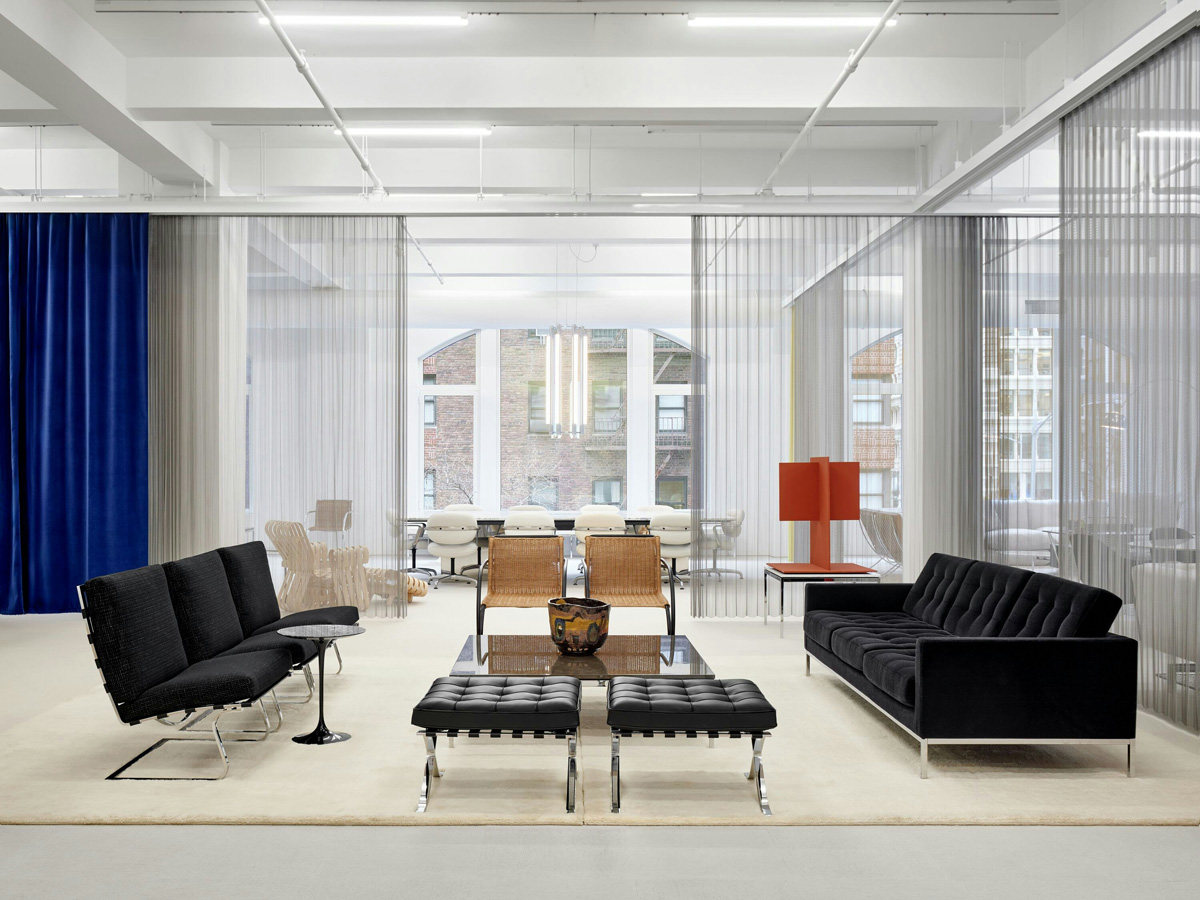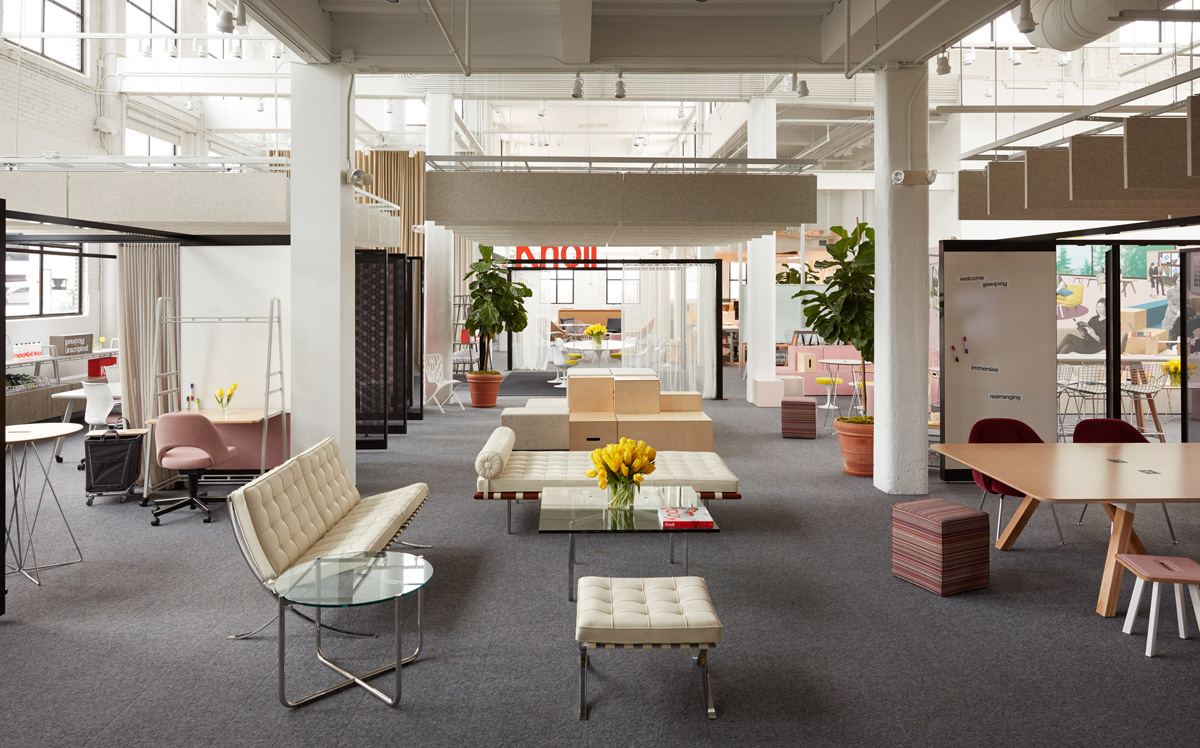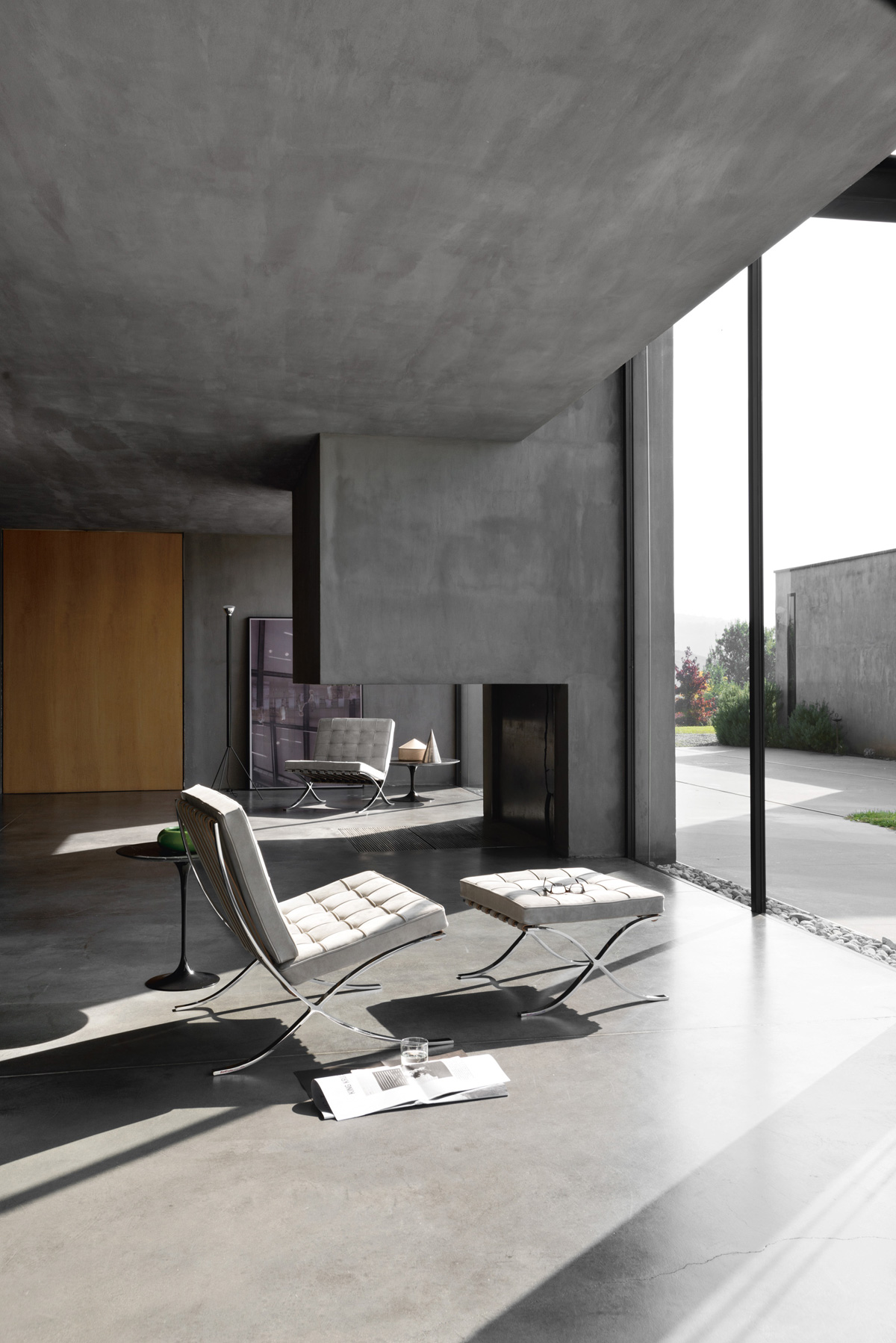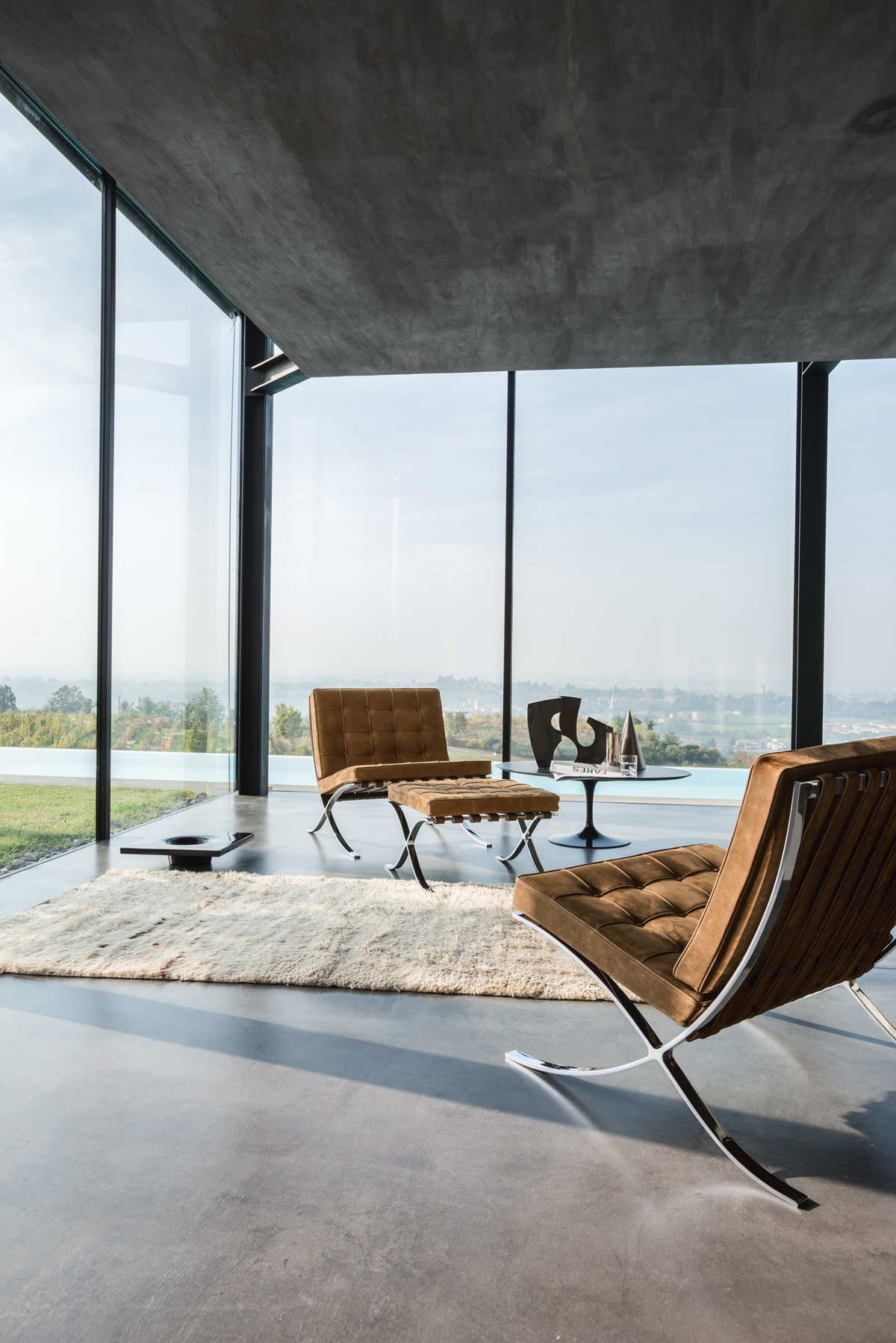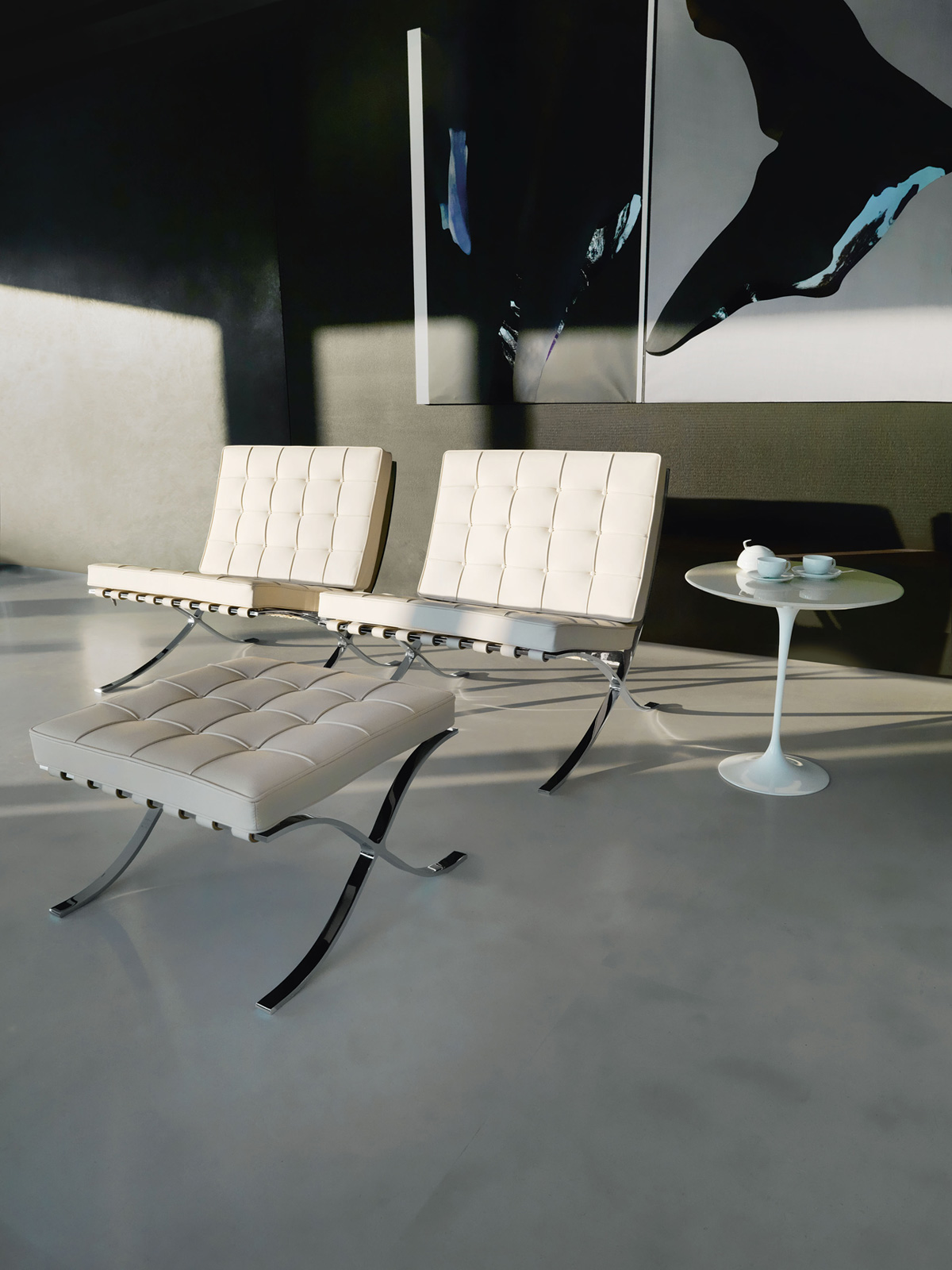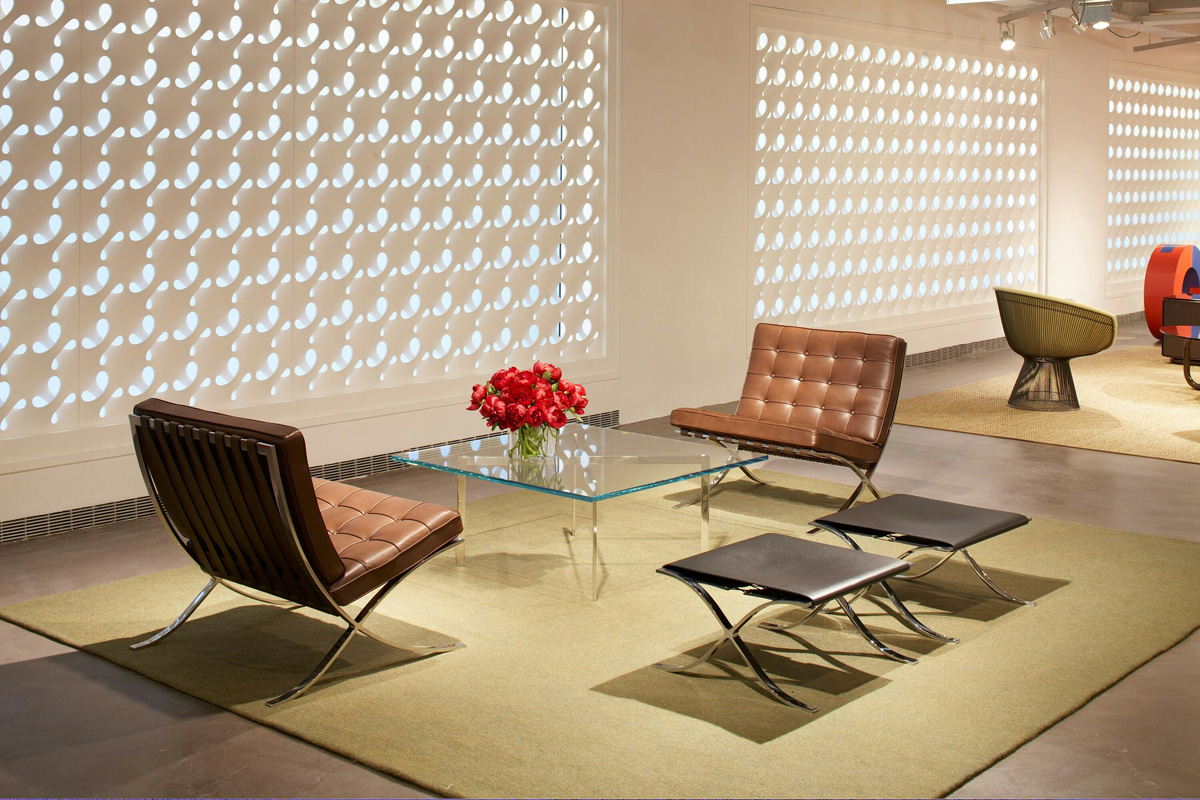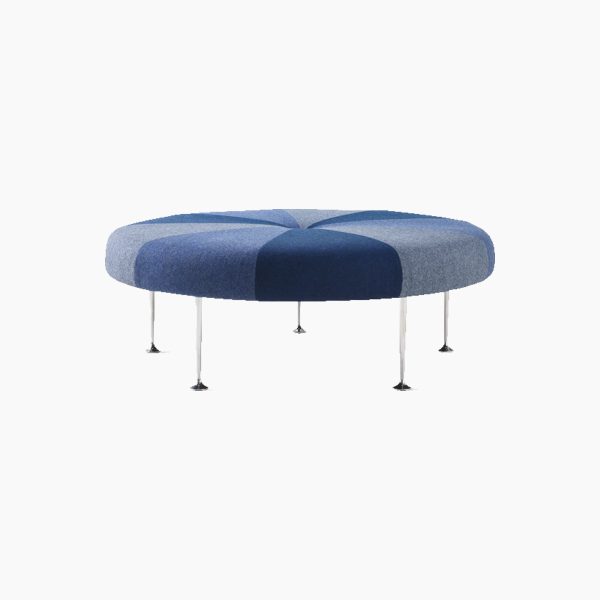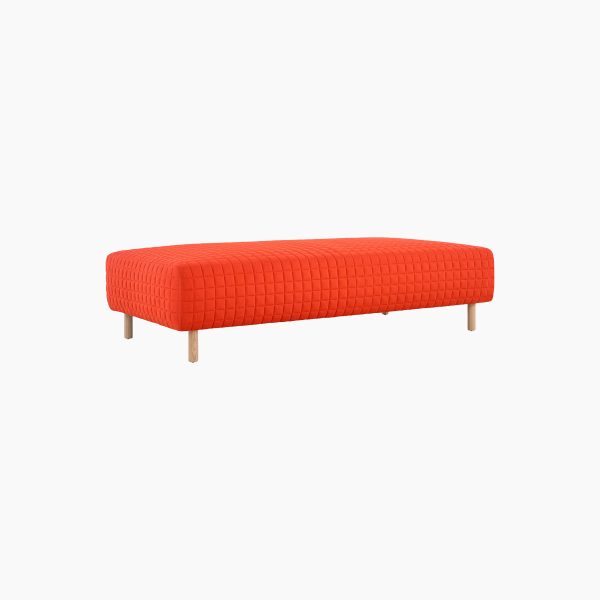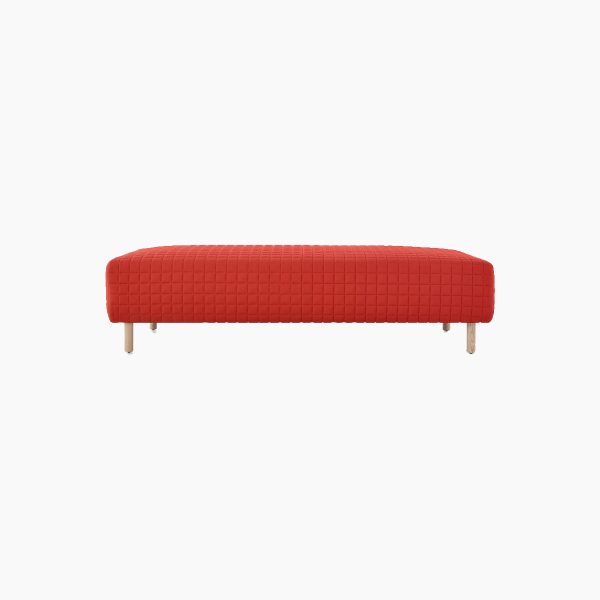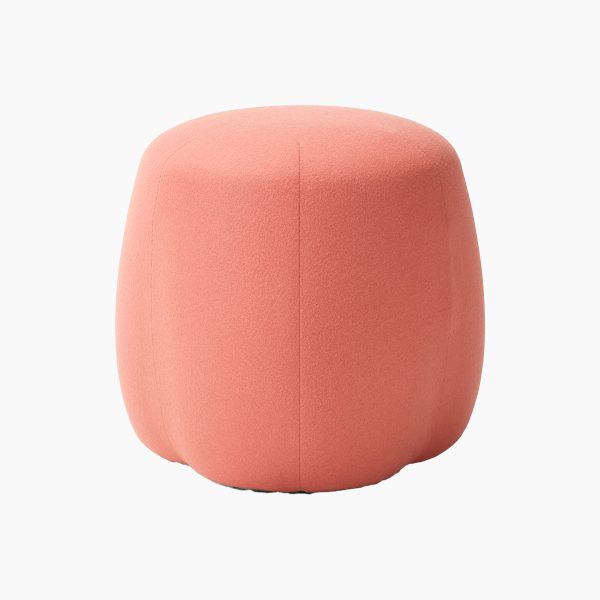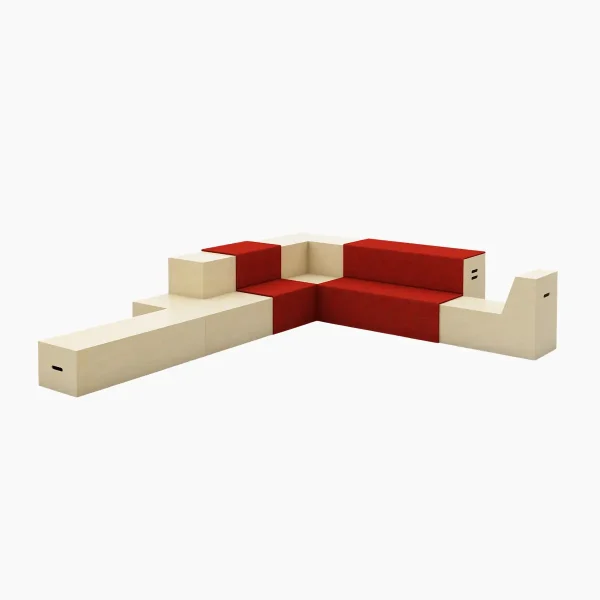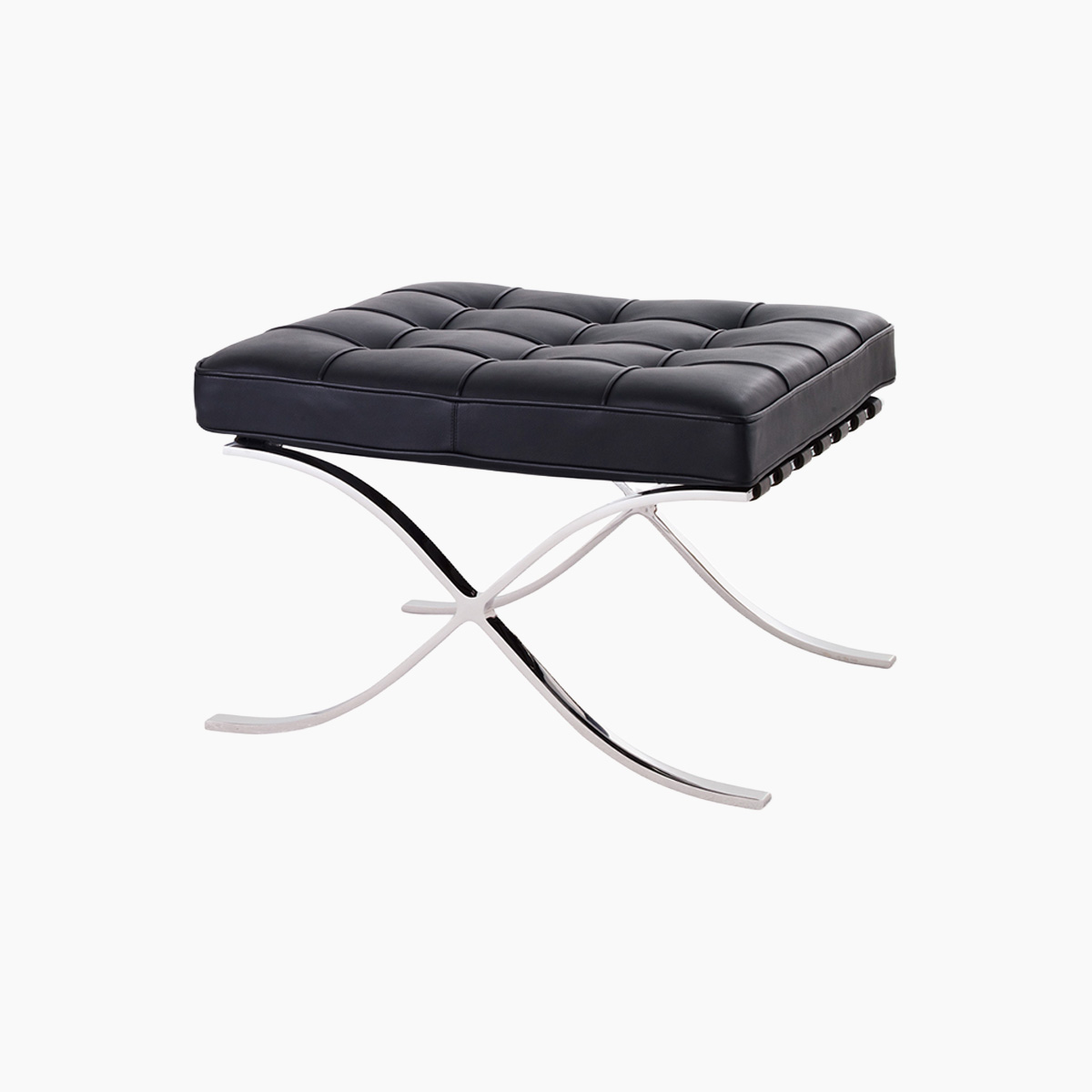
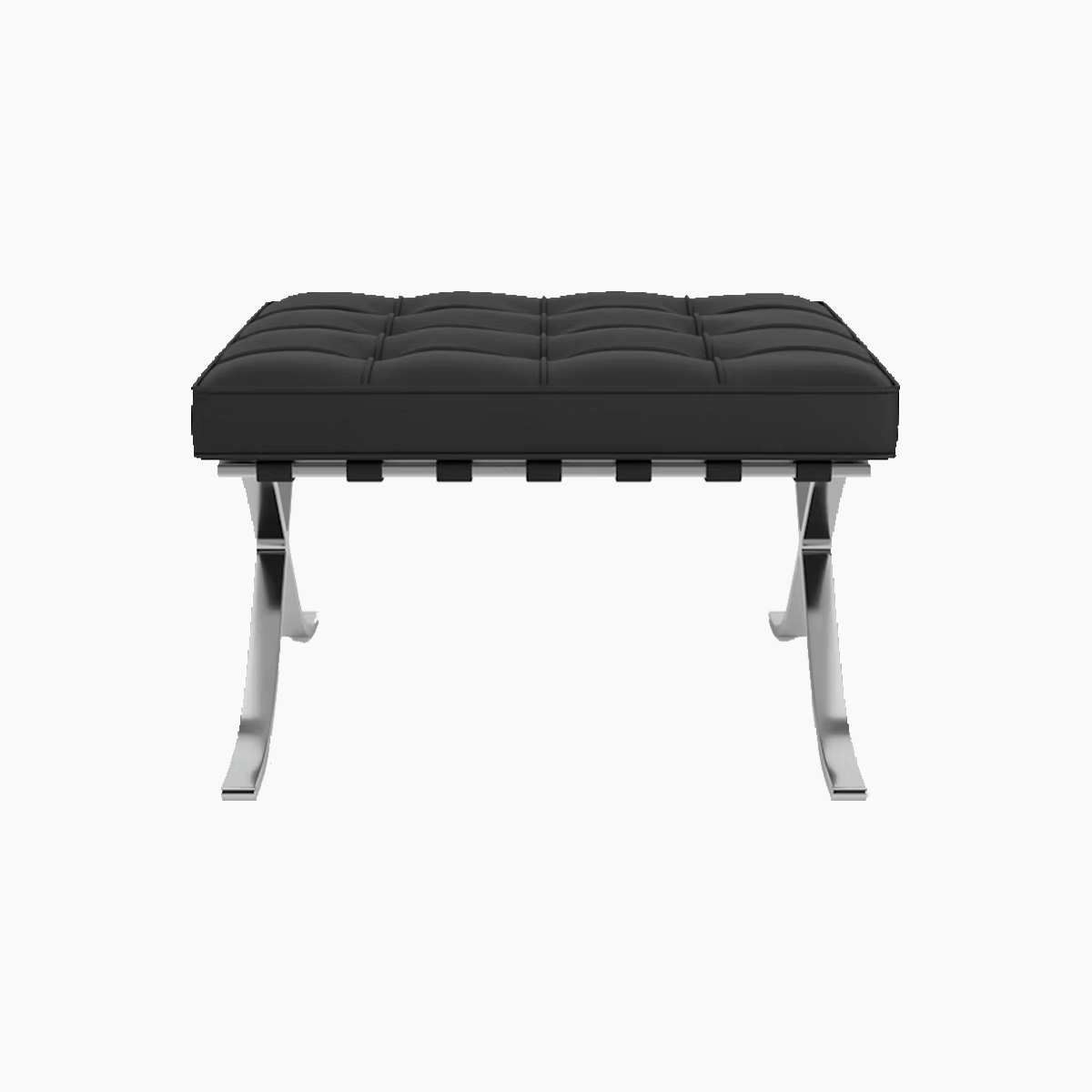
Barcelona Stool
Summary
The Barcelona Stool from Knoll is a tribute to traditional craftsmanship and meticulous attention to detail. Designed by Ludwig Mies van der Rohe in 1929, this stool supports the Barcelona Chair for added comfort, or can stand alone as a side seat or occasional table. It features a hand-buffed bent stainless steel, chrome, or ultra-matte onyx frame that elegantly supports a seat crafted from button-tufted leather or fabric. The seat’s cushioning is available in a standard highly resilient urethane foam or a relaxed soft density, fire retardant urethane foam blanketed with a non-woven fabric topper.
Dimensions
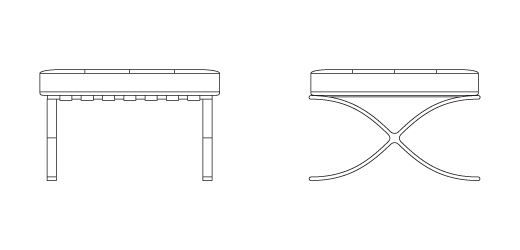
241Y Barcelona Stool
Height: 25″
Width: 23.25″
Depth: 14.75″
Seat Height: 14.75″
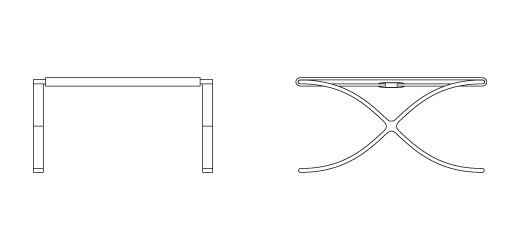
251YC-L80 Barcelona Stool with Cowhide
Height: 21.5″
Width: 23″
Depth: 12.25″
Seat Height: 12.25″

Product Story
Through masterful proportioning and planning, Mies created a rhythmic and entirely unprecedented space, which elevated industrial-age materials to a level of grace never before achieved. Inside, Mies included chairs and stools conceived as a resting place for the King and Queen of Spain. Determined to create a chair worthy of royalty, Mies is thought to have based the designs, with their signature crisscross frames, on the campaign chairs of Ancient Rome. Mies: “I feel that it must be possible to harmonize the old and new in our civilization.”
Although the Barcelona Pavilion only stood for seven months, it is recognized as a defining achievement of modern architecture, as are the accompanying Barcelona Chairs (although the King and Queen reportedly never sat in them.
Mies, a close friend and mentor to Florence Knoll during her time at the Illinois Institute of Technology, formally granted Knoll the production rights to the Barcelona Chair and Stool in 1953. The designs immediately became a signature of the Knoll brand and have been built to Mies van der Rohe’s exacting standards ever since.
Ludwig Mies van der Rohe
Regarded as one of the most important figures in the history of architecture, Ludwig Mies van der Rohe brought a less-is-more approach to everything he designed, from furniture to skyscrapers. “Architecture is a language,” wrote Mies van der Rohe. “When you are very good you can be a poet.”

